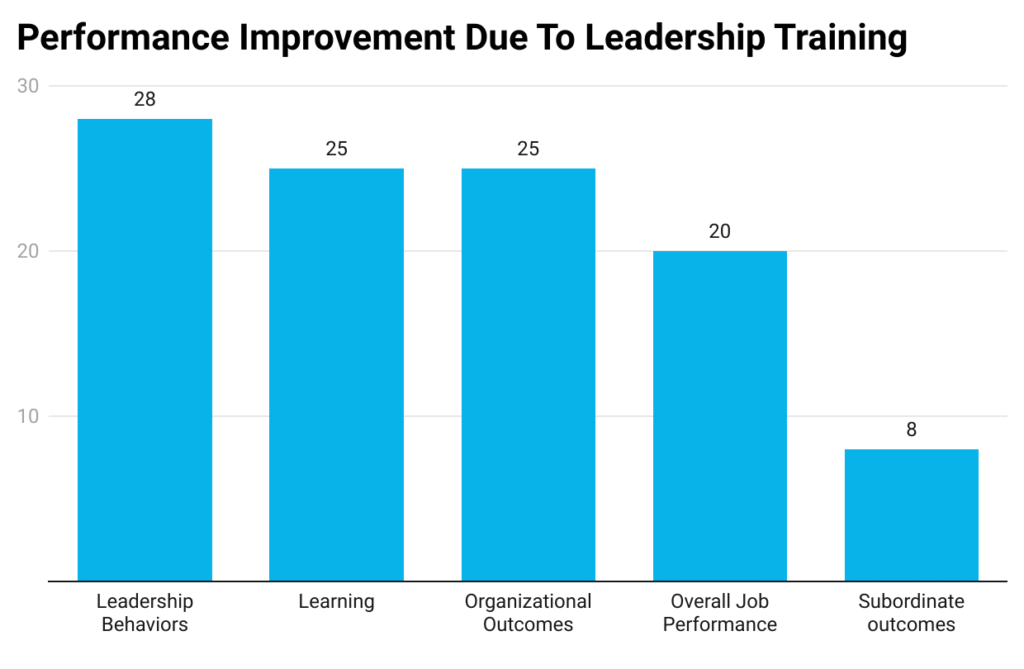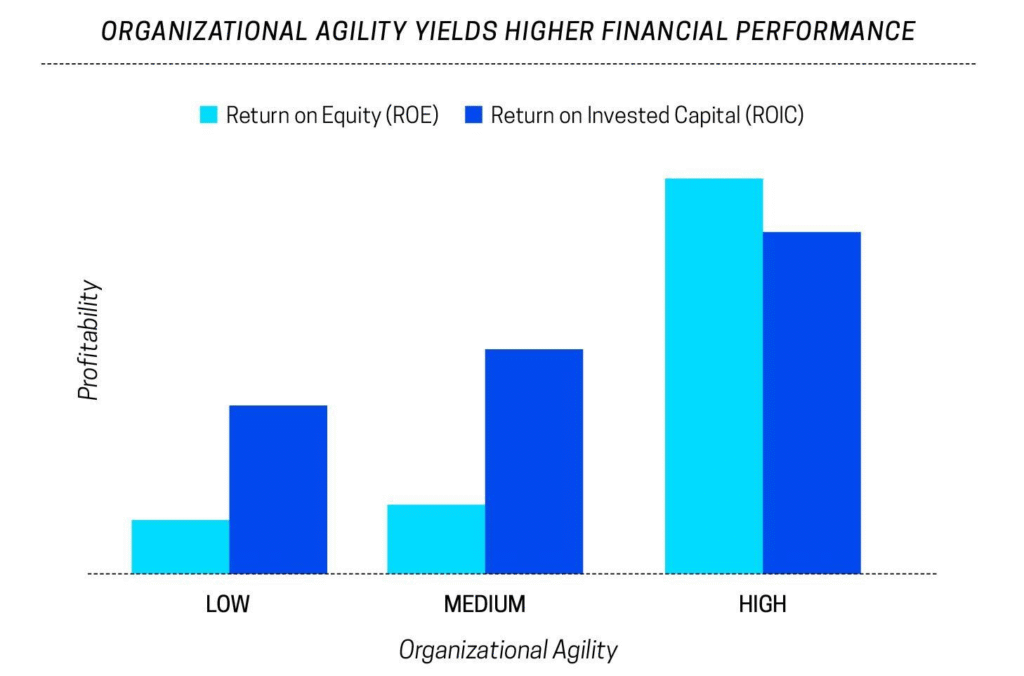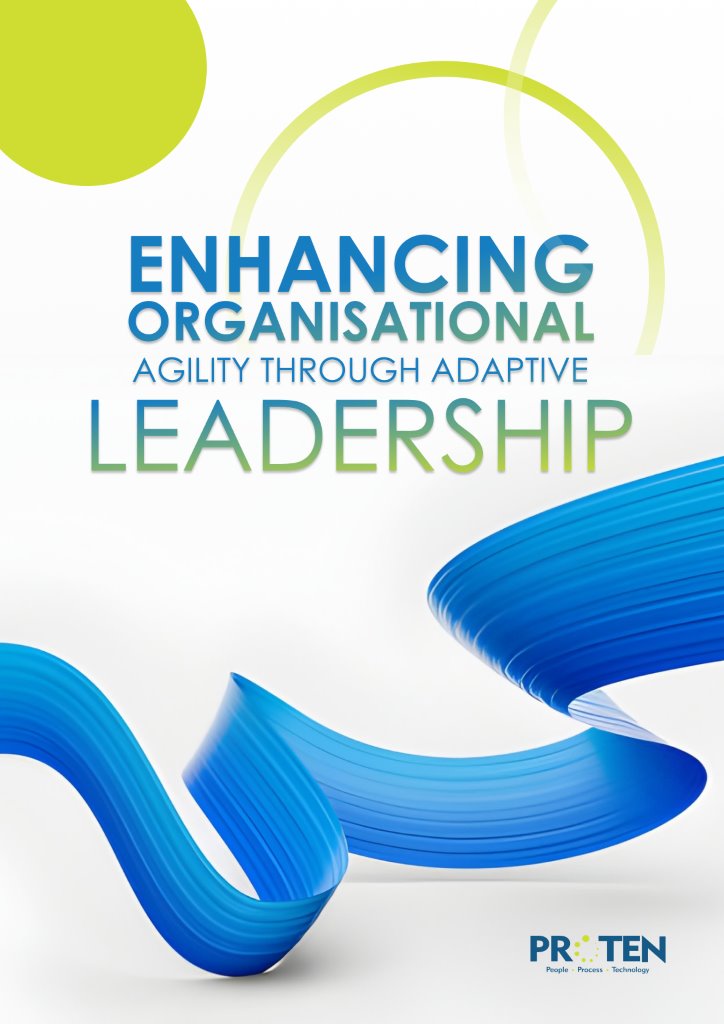Introduction
Effective leadership is the cornerstone of organisational success and sustainable growth. In an increasingly complex world shaped by economic volatility, geopolitical tensions, and rapid technological change, the ability of leaders to guide their organisations with clarity, resilience, and vision has never been more critical. For Nigerian businesses, these global dynamics are compounded by local challenges such as fluctuating oil prices, infrastructural deficits, and currency instability — making strong, adaptive leadership not just an advantage, but a necessity.

Source: Zenger Folkman
Adaptive leadership, which emphasises flexibility, innovation, and collaborative problem-solving, enables organisations to remain agile in the face of uncertainty. It equips leaders to navigate disruptions, empower teams, and foster a culture that embraces change — all of which are vital for maintaining competitiveness in Nigeria’s dynamic business environment.
Defining Organisational Agility
Organisational agility is not just a business capability—it is a people capability. At its core, agility is the collective ability of an organisation’s people to detect market signals, interpret them correctly, and respond with coordinated, decisive actions that advance strategic objectives. In other words, an organisation can only be as agile as the talent, leadership, and culture that power it.

Source: PMI
Agility operates across three human-centred dimensions:
Sensing: Employees and teams must be empowered to continuously scan internal and external environments for opportunities and threats—whether it is economic signals, regulatory shifts, or evolving consumer behaviours.
Responding (Acting): Agility depends on the ability of people to collaborate quickly across functions, mobilise resources, and implement changes. This includes supply chain teams adapting to infrastructural disruptions or entire workforces embracing digital tools during economic fluctuations.
Strategic Flexibility: Long-term adaptability is rooted in a workforce capable of learning, innovating, and rethinking business models—for instance, diversifying business interests or expanding into new markets.
Ultimately, agility is not achieved through processes alone but through adaptive leadership that fosters a culture of learning, collaboration, and empowerment—enabling people to sense, respond, and pivot faster than competitors.
The Concept of Adaptive Leadership
Adaptive leadership, developed by Ronald Heifetz and colleagues, addresses complex, evolving challenges that require learning, experimentation, and collective effort, distinct from technical problems solvable with existing expertise. Leaders act as facilitators, mobilising teams to tackle uncertainty and drive innovation.
Key characteristics include:
– Emotional Intelligence and Flexibility: Leaders regulate emotions, embrace ambiguity, and pivot strategies, aligning with frameworks like Wiley’s AgileEQ, which integrates emotional intelligence with rapid decision-making.
– Collaborative Orientation: Promoting decentralised decision-making and cross-functional teams to harness diverse perspectives, enhancing innovation by up to 20% in learning organisations. (Medium)
– Learning Agility: Modelling a ‘fail-fast, learn-faster’ mindset to build resilience through continuous upskilling.
Studies show that adaptive leadership fuels innovation in private organisations by building employees’ confidence to navigate change and contribute new ideas. For Nigerian businesses, this leadership style resonates with the cultural value of communalism—encouraging collaboration—while helping to break rigid hierarchical traditions that can stifle speed and creativity.
Linking Adaptive Leadership to Organisational Agility
Adaptive leadership enhances organisational agility by creating an environment conducive to innovation and rapid response, often termed ‘adaptive space’. This linkage operates through several mechanisms:
– Fostering a Learning Culture: Adaptive leaders promote continuous learning, enabling organisations to sense and act on changes. According to the European American Journal, in Nigeria’s banking sector, where fintech disruption is prevalent, adaptive leadership has driven strategic flexibility, improving customer retention by 88% through enhanced sensing and acting capabilities.
– Empowering Decentralised Decision-Making: Delegating authority accelerates responses, as seen in empowering leadership models that boost adaptive performance. In Nigeria, bureaucratic delays in manufacturing firms hinder agility, costing up to 15% in lost productivity, which decentralised structures can mitigate.
– Building Resilience to Volatility: Adaptive leaders leverage relational governance to enhance dynamic capabilities, enabling firms to navigate economic fluctuations and seize opportunities like digital market growth.
In dynamic capability theory, adaptive leadership integrates sensing, seizing, and transforming resources, positioning organisations for sustained competitive advantage. For Nigerian firms, this means addressing 2025’s projected 4.1% growth while mitigating risks like global trade tensions. (PwC)
The Nigerian Business Environment and Agility Challenges
Nigeria’s business ecosystem in 2025 is marked by resilience amid adversity. Economic growth of 3.4% is driven by non-oil sectors, but challenges include inflation at 20.7%, fiscal deficits of 4.1% of GDP, and global uncertainties like US-China trade tensions (AfDB). Key barriers to agility include:
– Infrastructural Deficits: According to IJBM, Power outages and poor logistics inflate costs by 40%, impeding responsiveness in manufacturing and SMEs.
– Regulatory Volatility: Frequent CBN policies on forex and trade create uncertainty, as seen in recent naira fluctuations.
– Talent and Skills Gaps: Brain drain and low digital literacy hinder innovation, with only 33% of firms adopting agile practices. (Nature)
With 50% internet penetration, opportunities lie in digitalisation. Agile Nigerian banks have leveraged AI for customer retention, achieving sustainable advantages. Adaptive leadership is critical to transform these challenges into growth opportunities.
Strategies for Implementing Adaptive Leadership in Nigeria
To embed adaptive leadership, Nigerian organisations should:
1. Develop Learning Agility Programmes: Invest in training for emotional intelligence and scenario planning, targeting a 20% agility uplift. Partner with HR firms like Proten International for tailored workshops.

Source: ElectroIQ
2. Promote Decentralised Structures: Shift from hierarchies to agile teams, as in SAFe frameworks, reducing decision times by 30%.
3. Leverage Technology for Sensing: Adopt tech-driven analytics to monitor economic indicators, enhancing responsiveness in volatile markets.
4. Foster Inclusive Cultures: Address ethno-religious divides through collaborative leadership, building trust in diverse teams.
In 2025, organisations can implement adaptive leadership by embedding it into decision-making, team structures, and performance management systems—ensuring leaders model flexibility, transparency, and collaborative problem-solving. Success can be measured through agility metrics, such as response time to market shifts, and regular employee self-efficacy surveys to track how confident and empowered teams feel to navigate change.
Conclusion

Source: TalentQ
Adaptive leadership is no longer optional for organisations operating in Nigeria’s fast-changing business environment—it is a strategic imperative. Organisations that embed adaptive leadership are better positioned to navigate challenges, turning volatility into opportunity. By building leaders who can sense emerging trends, interpret them accurately, and act decisively, businesses can enhance their organisational agility and achieve sustainable growth.
To fully leverage adaptive leadership, organisations must prioritise flexibility, collaboration, and continuous learning at all levels of their workforce. This involves creating decision-making structures that empower teams, fostering open communication channels, and encouraging innovation even in the face of uncertainty. Organisations that focus on developing the creativity and resilience of their people will be able to pivot faster and sustain a competitive edge in a volatile market.
Ultimately, investing in adaptive capabilities is an investment in people and culture. Leadership development programs, talent mobility initiatives, and agile team structures should be core elements of organisational strategy. By equipping leaders and employees with the skills and mindset to thrive amid disruption, Nigerian businesses can position themselves as frontrunners in Africa’s economic renaissance. Those who act now will not only weather future shocks but will define the next era of growth across the continent.
Next Step: Partner with Proten International
To activate adaptive leadership and agility, Nigerian organisations require expert HR support. Proten International, Africa’s leading HR and management consulting firm, offers tailored services including talent acquisition, learning and development, HR outsourcing, and advisory to build resilient teams. With a proven track record in recruitment, payroll management, and leadership coaching, Proten empowers businesses to navigate volatility and drive performance. Contact Proten International today at info@protenintl.com to explore how our solutions can transform your organisation.

